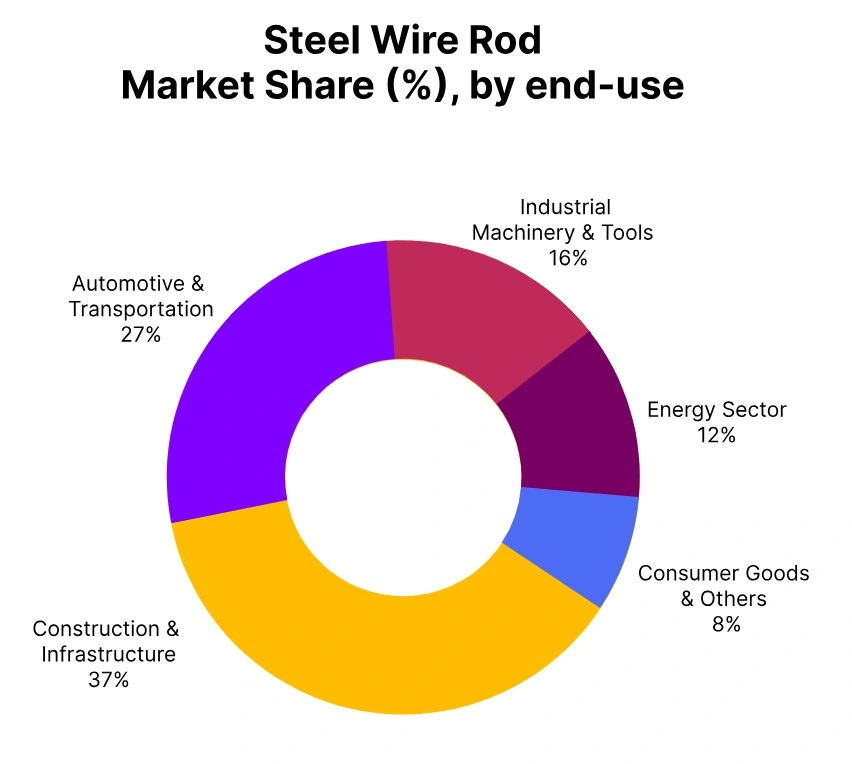Price-Watch’s most active coverage of Steel Wire Rod price assessment:
- SAE1008-5.5mm Ex-Ghaziabad, India
- SAE1008-5.5mm Ex-North India, India
- SAE1008-5.5mm Ex-Visakhapatnam, India
- SAE1008-5.5mm Ex-Sothern India, India
- SAE1008-5.5mm Ex-Durgapur, India
- SAE1008-5.5mm Ex-East India, India
- SAE1008-5.5mm Ex-Bhilai, India
- SAE1008-5.5mm Ex-Central India, India
- SAE1008-5.5mm Ex-Mumbai, India
- SAE1008-5.5mm Ex-West India, India
- SAE1008-6.5mm FOB Shanghai, China
- B500B 12mm FD Sheffield, United Kingdom
- A512-12.7mm Ex Alabama, USA
Steel Wire Rod Price Trend Q3 2025
In Q3 2025, the global Steel Wire Rod market showed varied trends, with some regions benefiting from strong construction and manufacturing demand, while others struggled under the weight of oversupply and muted industrial activity.
Competitive import pressures and stable raw material costs limited price volatility in many markets. September saw minor changes in most regions, reflecting a balance between cautious procurement and selective restocking ahead of seasonal demand patterns.
United States
Steel Wire Rod Domestic prices EX Alabama, USA, Grade- A512-12.7mm.
The Steel Wire Rod price trend in the USA rose by 2.07% in Q3 2025, underpinned by strong demand from construction, automotive, and industrial fabrication sectors. Restricted domestic supply due to mill outages and lower import arrivals provided upward momentum to pricing. Market sentiment stayed generally positive, with buyers confident in long-term project pipelines.
Procurement from end-users remained steady, ensuring support for prices across most regions. Steel Wire Rod prices in the USA inched up by 0.2% in September 2025, driven by consistent restocking activity, although gains were modest amid balanced supply-demand conditions.
India
Steel Wire Rod Domestic prices EX Mumbai, India, Grade- SAE1008-5.5mm
According to Price-Watch, the Steel Wire Rod price trend in India dropped sharply by 3.76% in Q3 2025, as the demand for manufacturing, engineering, and construction has been weak. Imports from Asian competitors also put pressure on domestic prices, leaving local mills with low market shares due to oversupply.
Limited progress in infrastructure projects and low activity in downstream sectors constrained consumption, which remained subdued throughout all of the quarter. Buyers have been cautious not to procure large inventories, given uncertainty on the near-term pricing.
Steel wire rod prices in India have decreased by 0.6% in September 2025, as demand remained weak aside from selective purchases made in anticipation of requirement during the seasonal period.
China
Steel Wire Rod Export prices FOB Shanghai, China, Grade- SAE1008-6.5mm.
According to Price-Watch, in the third quarter of 2025, Steel Wire Rod price trend in China have dropped by 1.60% due to low domestic demand from the construction and manufacturing sectors, impacting price growth in an oversupplied market. Export flows have deteriorated with increasing competition from Southeast Asian suppliers, while mills have maintained steady production levels amid slow offtakes.
At this stage, steady raw material costs have provided minimal support for a market recovery, with sentiment remaining weak across regions. By September 2025, as seasonal demand subsided and procurement slowed in anticipation of a weaker Q4 market outlook, Steel wire rod prices in China declined again by 3.1%.
United Kingdom
Steel Wire Rod Domestic prices FD Sheffield, UK, Grade- B500B 12mm.
According to Price-Watch, n Q3 2025, the Steel Wire Rod price trend in the UK experienced a decline of 2.64% owing to declining construction activity and weak industrial demand, as well as relatively strong competition from imports manufactured by other European producers.
Domestic mills endured margin pressure versus high operating costs of production while attempting to stimulate buyer interest. Exports lacked momentum and further curtailed market opportunities. Underlying procurement demands remained low as buying has been limited to only immediate requirements.
As a result, Steel Wire Rod prices in the UK modestly increased 0.4% in September 2025 with supporting small procurement orders deployed for infrastructure projects, which was reassuring but not necessarily indicative of greater demand, consumption trends have remained flat, and overall infrastructure spending continues to reflect continued concerns over ultimate project timelines.


